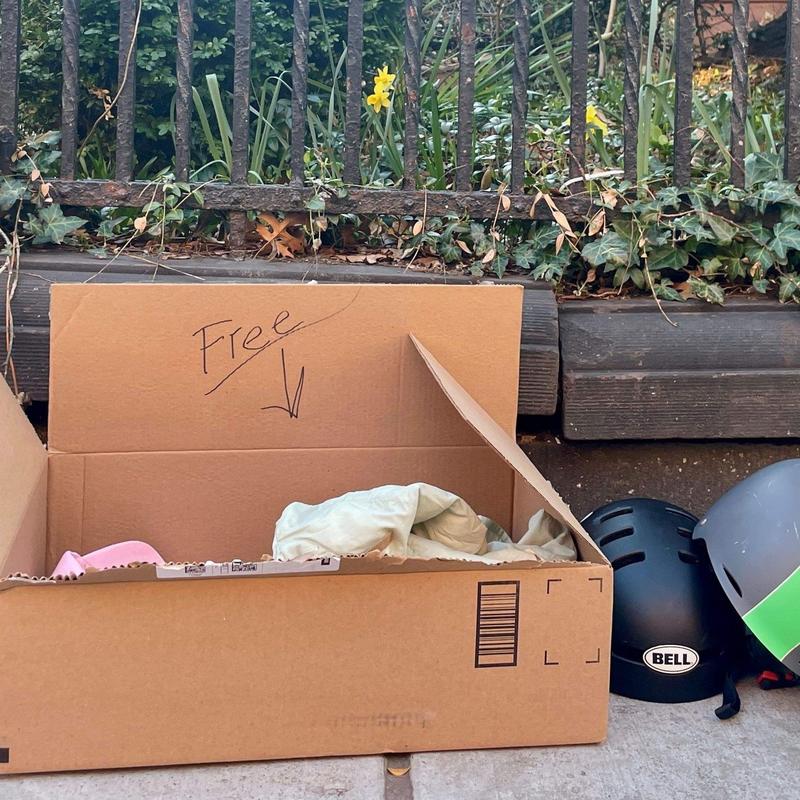
Korissa Matta had two months to move out of her old apartment in the East Village in spring 2022. She wanted to use her local Buy Nothing group to give away her old stuff.
But over the course of the summer, she was removed from the group twice for not responding quickly enough to an admin confirming that she still lived in the area.
Matta said the rules seemed unnecessary.
“People don’t want to follow all of those rules to get rid of a yoga mat that’s chewed up by their dog,” she said.
Even though Matta joined another Buy Nothing group after moving, she doesn’t use it anymore. But she said she’d put up with the drama if she needed to use the group again in a pinch.
It’s a pinch that many New Yorkers are feeling these days.
Buy Nothing groups, which connect people via Facebook to distribute free items, are having a moment in New York City, where rents have been rising faster than wages.
One group in Bushwick has more than doubled over the past three years and now counts over 17,000 members. In the East Village, group admin Sunny Cervantes said she’s flooded with too many membership requests to keep up with. Her group is 4,000 strong.
“These are hard times,” Cervantes said. “People need help.”
Scanning the groups across the five boroughs, there’s nearly no limit to what people give away. Nightstands, aquarium gravel, fire safety notice stickers, eight brown eggs, half a box of condoms, a Thanksgiving turkey — if you can think of it, it’s probably been on Buy Nothing. And as the cost of living keeps increasing, members will stomach almost any amount of drama and red tape for the savings.
There are more than 100 Buy Nothing groups across the city and more than 120,000 worldwide — and most follow rules set by a loosely organized national entity, the Buy Nothing Project.
In New York City, members said these groups make hard times easier by helping them save money, reduce waste and build community. Several people interviewed for this story said they’d saved thousands of dollars and furnished their apartments with items sourced from Buy Nothing groups.
But as the groups expand across the city, so do the challenges. Sometimes there are just too many people in them to be used effectively, so admins divide them in two. Other times members defect and start their own groups after disagreements over what the groups are for.
That’s because Buy Nothing groups are about more than just free stuff. Most aim to build neighborhood consciousness out of free stuff: little communities of mutual aid, equity and cooperation. But not everyone agrees on how to do that, and building a community is even harder when it’s happening in Facebook comments sections and under posts about free furniture.
And while in theory the basic rules are simple (no buying, no selling, no trading), in practice, according to several current and former Buy Nothing members interviewed for this story, rules can feel restrictive, fights can break out over silly issues and moderators can zealously enforce seemingly arbitrary rules. But plenty of other members said the rules and drama don’t faze them — they’re just happy to save a few bucks.
